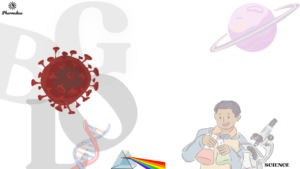
Breakthrough HIV treatment innovations: From daily pills to twice-yearly shots
Remember when HIV treatment meant carrying around a daily pill organizer and setting multiple medication alarms? Those days are rapidly becoming history. A healthcare revolution is unfolding with game-changing innovations that are transforming HIV treatment from a daily commitment to something as simple as getting a shot twice a year.
From long-acting injectables to promising gene therapies, the landscape of HIV care is experiencing its most dramatic evolution since the introduction of antiretroviral therapy. These breakthroughs aren’t just improving treatment effectiveness – they’re reimagining what living with HIV looks like in the modern era.

Revolutionizing HIV care: Breakthrough treatments and prevention strategies
Game-changing injectable treatments transform patient care
The HIV treatment landscape is experiencing a remarkable transformation with the introduction of long-acting injectable treatments. Groundbreaking clinical trials in Africa have shown that injectable treatments using cabotegravir and rilpivirine are just as effective as traditional daily pills. When patients received injections every eight weeks, an impressive 96.9% maintained viral suppression—matching the success rate of daily oral medications.
Think of it as switching from taking daily vitamins to getting a long-lasting B12 shot. This shift isn’t just about convenience; it’s about giving people living with HIV more freedom in managing their condition.
Weekly pills replace daily regimens
Gone are the days when HIV treatment meant juggling multiple pills every day. A revolutionary once-weekly oral regimen combining lenacapavir and islatravir is showing incredible promise. In a recent study, 94.2% of people who switched from daily Biktarvy to this weekly option maintained perfect viral control after 24 weeks.
Next-generation medications on the horizon
The HIV treatment pipeline is buzzing with excitement! New medications like MK-8527 and GS-1720 are being developed for once-weekly dosing. These aren’t just typical antiretrovirals; they’re smart drugs designed to fight HIV in innovative ways. MK-8527 works by blocking virus movement, while GS-1720 prevents HIV from integrating into human DNA.
Understanding treatment resistance and side effects
Let’s talk about something that keeps HIV specialists up at night: drug resistance. While the widely used integrase inhibitor dolutegravir remains highly effective, we’re seeing some concerning patterns. Just like bacteria can become resistant to antibiotics, HIV can adapt to medications—especially in certain groups like children.
Weight gain has emerged as an important consideration, particularly for women using integrase inhibitors. Postmenopausal women seem to be more affected, highlighting the need for personalized treatment approaches.
Pushing boundaries: The quest for a cure
Exciting developments in HIV cure research are giving hope to millions. A 60-year-old man in Germany achieved long-term HIV remission after receiving stem cells from a donor with natural HIV resistance. This success adds to a growing list of cases showing that a cure isn’t just a dream—it’s becoming more realistic.
Gene-editing therapies are also making waves. EBT-101, which recently received FDA fast-track status, represents a bold new approach to targeting HIV. Meanwhile, scientists are working on clever “induce and reduce” strategies to flush out hidden HIV and eliminate it completely.
Prevention takes center stage
Prevention is getting a major upgrade with Lenacapavir, a twice-yearly injection showing 100% effectiveness in preventing HIV infections in cisgender women. Imagine getting just two shots a year instead of remembering to take a daily pill.
But these advances only matter if people can access them. That’s why there’s a push for generic production in lower-income countries through programs like the Medicines Patent Pool. It’s not just about creating breakthrough treatments; it’s about making sure everyone who needs them can get them.
The road ahead
The future of HIV treatment is looking brighter than ever. From long-acting injectables to potential cures, we’re seeing innovations that would have seemed like science fiction just a decade ago. These advancements aren’t just improving treatment effectiveness; they’re making it easier for people to stay on track with their care while maintaining a high quality of life.
As these new treatments move through clinical trials and become available, they’re reshaping our approach to fighting HIV. The goal isn’t just to control the virus—it’s to make treatment so seamless that people living with HIV can focus on living their best lives.
The future of HIV care: Hope on the horizon
As we stand at the crossroads of traditional HIV treatment and revolutionary new approaches, the message is clear: we’re entering an era where HIV management is becoming more accessible, effective, and patient-friendly than ever before. From twice-yearly prevention shots to potential cures through gene editing, these innovations represent more than medical advances—they symbolize hope.
Researchers and healthcare providers emphasize the impact of new treatments on improving HIV management and the potential for future advancements. Experts predict that continued research and development will lead to more effective and accessible treatments. UNAIDS and WHO highlight the importance of innovative treatments and strategies to end the AIDS epidemic by 2030. Ensuring global access to new treatments and promoting HIV testing and effective ART coverage are critical steps
The journey toward revolutionizing HIV care continues, driven by groundbreaking research and unwavering dedication to improving patients’ lives. As these new treatments become more widely available, we’re not just fighting HIV more effectively—we’re empowering individuals to live fuller, more confident lives with fewer treatment barriers.
